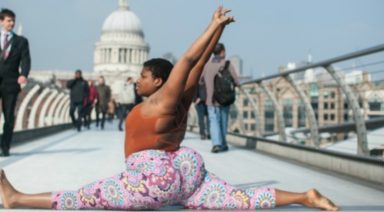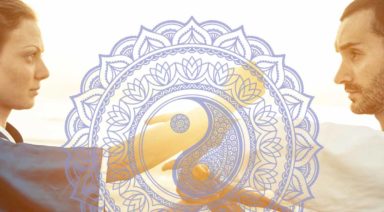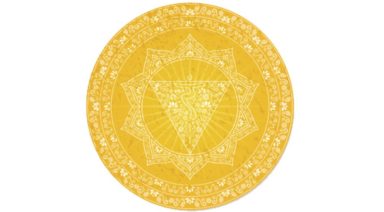Exploring Saucha

Choosing Simplicity in a Complex World
“Through simplicity and continual refinement (Saucha), the body, thoughts, and emotions become clear reflections of the Self within. Saucha reveals our joyful nature, and the yearning for knowing the Self blossoms.”
Yoga Sutras 2.40-2.41
Our world is anything but simple. We contribute to its complexity by continually adding more to our plates, multitasking at an epic level, and feeding our insatiable consumerism with the latest and greatest technology, experiences, and information at an exhausting rate. Even the word simple now holds a boring or blasé connotation to some. But with too much external, materialistic focus, we lose the ability to orient ourselves within, and our identity becomes toxically associated with what we have and what we do, rather than who we are.
This Yoga Sutra addresses the need to clarify ourselves mentally, physically and emotionally in order to reclaim our natural state of joy. Imagine how you would feel physically if you ate continually throughout the day. As the body needs time to rest between meals, to assimilate and eliminate food, so the psyche needs time off the treadmill to integrate inner and outer experience. If the essence of our daily existence is a desperate effort to get it all done, constantly engaging with the next task, we never have a chance to digest and assimilate what has already been.
In our culture, stress is at an all time high. People feel overwhelmed, unable to keep up. This feeling locks the parasympathetic nervous system into the production of cortisol and heightens the body’s fight or flight response. When we run on this high, for an extended period of time, we become unable to relax and slow down, and eventually we burn out. Our immune systems become compromised and stress-induced illnesses develop.
So why don’t people adopt the practice of simplicity?
Theoretically, simplification sounds good to most people but they don’t know where to begin. When even daily choices are complex, like how many social media portals to connect with or what supplements to take for optimal health, simplifying is no easy task. Even spiritual aspirants who conceptualize the need for simplification, complicate their search for Self-knowing through an endless stream of trainings, philosophies and workshops.
Generally speaking, humans avoid change of any kind, preferring what is known. And we avoid simplicity for fear of boredom. Unfortunately, we have collectively forgotten the gift that boredom brings. Its gift is spaciousness and with space comes creativity. By simplifying, we invite psychic space where our minds can meander and imagine and our souls can shine through. Of course in order to receive these gifts, we must be willing to forgo some instant gratification.
By approaching simplicity through the definition “easily understood or done, presenting no difficulty,” it becomes more appealing. Who wouldn’t want their day to be full of ease and presenting no difficulty? Begin by eliminating one thing from your to do list each day. And practice being completely present to whatever, or whomever you are with in the moment. When we focus on one thing at a time, we create a much richer and more easeful experience. The more we simplify, the easier it becomes to stay centered because there are less forces pulling at us. We find clarity and the ability to make necessary change.
The kind of simplicity this Yoga Sutra is pointing us towards is not some quaint nostalgia for the past. And it is not instructing us to sell our worldly possessions to go live on a mountaintop. It is guiding us toward the ability to function in the complexity of the world, and still cultivate a connection to an inner joy that gives true meaning to our lives. In time, as we slow down enough, we realize that enough really is enough, and that in the most authentic sense, less brings us more.
In this overcrowded, over-stimulated world, cultivating simplicity is one of the most challenging choices we can make – and one of the most essential. It can help us reorient towards the Divine Self that lives within, which is of course the point of all Yoga practice. By practicing simplicity, we make room for what matters most.
This article is part of an ongoing series on the yamas and niyamas. For the full 10-part series click on each link below:
The Science of Suffering: Understanding the 5 Kleshas and What They Really Mean

For most of us, life is pretty simple when we’re born. Our needs are met. Our concerns are only essential. Our world is new, beautiful, and engaging. And, most importantly, we are connected to the source of the universe, enjoying a direct line to love. In the profound teachings in A Course in Miracles, one of the most foundational beliefs is that when you are connected to this source your life is good, miraculous in fact. But, when separated from it, life is painful and complicated; you are overwhelmed with the feeling of being lost.
In Patanjali’s Yoga Sutras, another equally profound book of wisdom, the concept of being separated from the universal source of love is broken down into five identifiable roots of suffering. Known as the kleshas, these roots are what keep us away from love and, therefore, are what cause us to suffer.
By understanding the science of suffering by digging into these kleshas, you can begin to become aware of what is keeping you from enjoying life, what is keeping you from knowing, as the yogis say, your true nature.





































